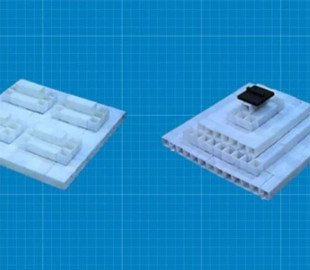
The device consists of cubes and encodes information not only with the help of 0 and 1. Such the computer will be able to perform complex calculations and create three-dimensional passwords.
Researchers from North Carolina State University (USA) have developed a prototype of a mechanical computer using polymer cubes that can go beyond the binary approach to data storage. The design of the device makes it possible to fix data on the spot or edit them without using any electronic components, reports Interesting Engineering.
Modern computing consumes a lot of energy and generates a lot of heat. To solve this problem, researchers from North Carolina State University have created a mechanical computer that does not require electricity.
The device is made of polymer cubes no larger than 1 cm in size. The functional block consists of 64 such blocks connected to each other by thin strips of elastic tape. The design of these cubes is inspired by kirigami — the Japanese art of paper cutting, — and when any of these blocks is moved up or down, the geometry of the interconnected tubes changes.
Thus, a functional unit is a metastructure that stores data and enables more complex computations. To edit the data in the blocks, the user will need to drag the edges of the metastructure to move the individual blocks. When the metastructure is released, the ribbon is compressed, holding the cubes in place and locking the data.
The information density of this device is quite good. Using a binary structure in which the cubes are either up or down, a simple metastructure of 9 functional blocks has more than 362,000 possible configurations, the scientists explained.
Interestingly, a mechanical computer does not limit scientists to processing data from using only the binary system — 0 and 1. Each functional block of 64 cubes can be configured in a wide variety of architectures, and the cubes can be stacked up to five high. There's potential for more complex calculations here, with data being transmitted depending on how high the cube is raised, the developers said. Within this experimental system, it was demonstrated that cubes can have 5 or more different states. In theory, this means that a single cube can convey not only 1 or 0, but also 2, 3 or 4.
Researchers are interested in applying these metastructures to create tactile systems that display information in a three-dimensional context, rather than as pixels on the screen. For example, a certain configuration of cubes can serve as a three-dimensional password.

